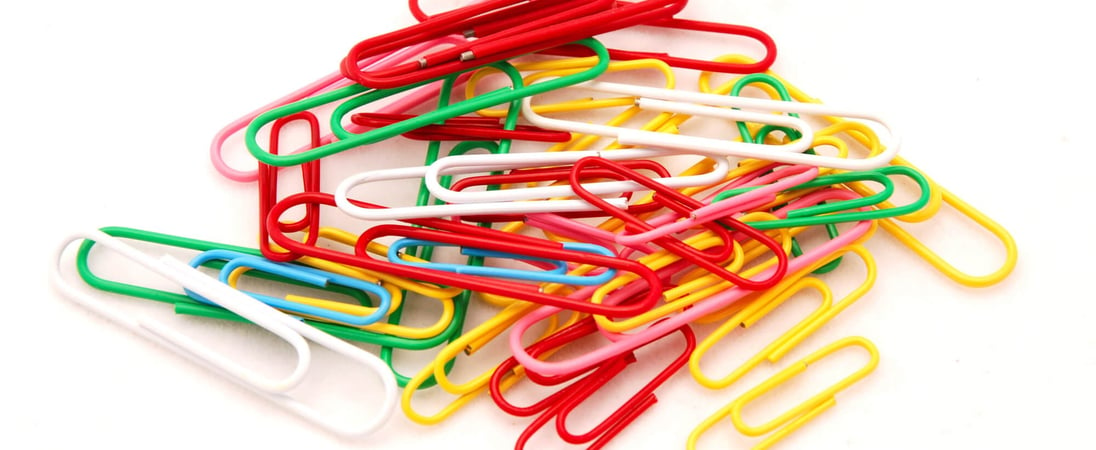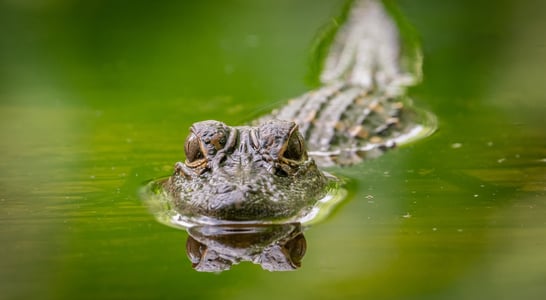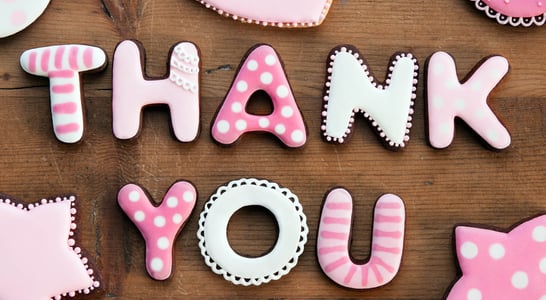
National Paperclip Day
Paper clips can do everything from hold papers together (duh) to hang ornaments or scratch lottery tickets. Try some arts, crafts, and DIY using paper clips.
Did you just roll your eyes at the idea of the bent little piece of metal known as the paper clip should have it’s own holiday?
Have you ever worked in an office? If not, we can see how you might not get it—and that’s alright, we’re about to explain everything to you.
But if you have, you know exactly where we’re coming from—and don’t worry, we have some interesting information for you, too. So let’s get on with National Paperclip Day, shall we?
How to Celebrate National Paperclip Day
Everyone knows that paper clips can be used to hold papers together. But did you know how many other things can be done with them?
What To Do with Paperclips
This National Paperclip Day, maybe take a little time to find out just how many other things you can do with them, and how many uses there are that you just never thought of. To name but a few examples, paper clips can be used:
- As emergency key chains (they’re really built almost the same as a normal key chain!)
- As emergency zipper tabs (few things are more irritating than being locked inside your jacket!)
- As DIY fish hooks (because we sometimes run out of authorized equipment, and the fish won’t care as long as there’s a worm!)
- As emergency hair barrettes (sometimes you just need to get that hair out of your face!)
- To hang ornaments whose little stringy thingies have torn (colored paper clips could actually add some color to the tree!)
- As lottery ticket scratchers (for those times when you just got your nails done and don’t want all that gray gunk under them!)
- To unclog narrow holes, like a spray can nozzles, salt and pepper shakers, glue bottle tips, etc.
We could go on, but you get the idea—and feel free to come up with some of your own, too! Paper clips are one of the most versatile little bits of metal ever made, so let’s get celebrating National Paperclip Day!
Read Interesting Facts and Stories
Another way to celebrate National Paperclip Day is to simply do a bit of research and digging online for some interesting facts and stories.
You may think that paper clips are boring, but you would be surprised! In fact, one man from Canada – Kyle Macdonald – actually managed to swap a red paperclip for a property.
He did this by completing a number of trades online, each time swapping his item for something more valuable. So, he started by swapping his red paper clip for a pen shaped like a fish, and so it continued, until he actually ended up with a house!
Watch “Paper Clips“
Another way to observe National Paperclip Day is to watch Paper Clips, which is an American documentary film that was released in 2004. It was directed by Elliot and Fab Berlin, with Joe Fab producing and writing the film. It is the perfect film to watch on this day, as it is about the Paper Clips Project.
This is a project whereby a middle school class aims to collect six million paper clips in order to represent the six million Jewish people who were killed by the Nazis.
It really is an amazing story. It involves Whitewell Middle School of Whitwell, Tennessee. The principal of the school, Linda M. Hooper, asked David Smith – the Assistant Principal – to find a voluntary project for after-school that would teach children about tolerance.
David Smith started a Holocaust education program alongside Sandra Roberts, with classes beginning in the fall of 1998.
Once the students started to learn about the Holocaust, they could not believe the sheer scale of it. They asked the principal if they would be able to collect something that could represent the lives that were lost because of this tragedy.
Mrs. Hooper said if they were able to locate something that was linked to WW2 or the Holocaust, they could. So, the students embarked on some research, and they discovered that a Norwegian, called Johan Vaaler, designed a loop of metal. They also discovered that paperclips were worn on the lapels of Norwegians during WW2 as a silent protest against Nazi occupation.
Because of this, the students decided that there would collect six million paper clips as a representation of the six million Jewish people that were believed to have lost their lives while Adolf Hilter was in charge of the Naxi government.
The project did not receive a lot of attention in the beginning. However, it started to snowball after two journalists who were born in German during WW2 discovered the project: Peter and Dagmar Schroeder. The film explains this beautiful and heart-warming story, and it has won a number of awards as a consequence.
At the Rome International Film Festival in 2004, it was awarded the Best Overall Film, Best Director, Best Original Score.
The National Board of Review also awarded it an NBR Award for Top Five Documentaries in the same year. So, if you have not watched this film before, we definitely recommend watching it on National Paperclip Day!
History of National Paperclip Day
The first patent for a bent wire paper clip was awarded in the Samuel B. Fay in 1867 in the United States. Originally, the paper clip was designed for attaching tickets to fabric, although the patent recognized that it could be used to attach papers together.
However, that model of a paper clip did not resemble the one we know today all that much. The paper clip as we know it was most likely designed by Norwegian inventor Johan Vaaler.
Years later, during World War II, the paper clip was used as a symbol of the Norwegian resistance to Nazi German occupation. Meant to show solidarity with other Norwegians during those difficult times, paper clips were worn in coat lapels by many. The Nazis saw this show of solidarity as a threat, and they soon prohibited paper clips altogether, threatening people who dared wear them with severe punishment.
In fact, an enormous paper clip over a meter wide and five meters tall was erected in Sandvika, Norway, to remind people about the role this tiny object played in the nation’s history.
You have to admit you never thought paper clips had such an interesting history, don’t you? Starting in 2015, National Paperclip Day is now celebrated every year on this day.
National Paperclip Day FAQs
How did a simple trade of a paper clip lead to a house?
In 2005, Kyle MacDonald famously traded a red paper clip online in a series of 14 barters, ultimately acquiring a two-story house in Saskatchewan, Canada.
This creative use of a paper clip became a global sensation, highlighting the object’s symbolic potential for creativity and perseverance.
Why is there a giant paper clip statue in Norway?
A 23-foot tall paper clip sculpture stands in Sandvika, Norway, celebrating Johan Vaaler’s contributions to early paper clip design.
Though his invention wasn’t the modern Gem clip, Norwegians embraced it as a national symbol, especially during World War II.
Did early offices use paper clips, or something else?
Before paper clips, offices often used pins or ribbons to organize papers.
These methods risked damaging documents or were cumbersome. The advent of the modern paper clip revolutionized file organization by offering a simple, reusable solution.
Can you craft art with paper clips?
Artists around the world create intricate sculptures using paper clips, transforming this office tool into a medium for art.
From miniature animals to elaborate chain designs, these works showcase the paper clip’s versatility beyond its intended use.
What surprising uses do surgeons have for paper clips?
In emergencies, surgeons have used sterilized paper clips to repair damaged arteries or hold tissues in place temporarily.
While not a substitute for proper tools, this resourceful use demonstrates the clip’s adaptability in critical situations.
Are there environmental concerns about paper clips?
Paper clips are often made of steel, a recyclable material. However, many coated clips, like plastic ones, are less eco-friendly.
Choosing reusable or uncoated clips helps reduce environmental impact while maintaining their practicality.
How did the paper clip influence early aviation?
Early aircraft engineers sometimes used paper clips for prototype models. These clips helped hold lightweight materials together during testing, demonstrating their utility beyond offices.
Why is the paper clip considered a symbol of minimalism?
The paper clip’s simple design—functional yet elegant—has inspired minimalists worldwide.
It’s often seen as a reminder that simplicity in design can be both effective and beautiful, influencing various fields from architecture to graphic design.
How has the paper clip been used in education?
Teachers often use paper clips for creative STEM activities, like demonstrating magnetism or creating simple machines.
This approach engages students with hands-on experiments, making science concepts more relatable and fun.
What’s the connection between paper clips and the tech world?
In 1997, Microsoft’s “Clippy” icon made the paper clip a pop culture reference.
As a digital assistant in Microsoft Office, it symbolized user-friendly technology. While often criticized, Clippy remains an enduring example of the paper clip’s influence.
See what else is happening…
There’s always more going on every month at Days Of The Year. Here are our favorites this month!
Also on ...
View all holidaysNational Alligator Day
In the swamps and wetlands of the American South, some ancient reptiles silently patrol the waters, showcasing nature's remarkable adaptability.
International Everest Day
Climb your own “Everest” by taking a hike or climb at a local hill. Want to do the real thing? Start training and researching so you can conquer that peak.
National Biscuit Day
In the US, they’re flaky bread rolls. In the UK, they’re sweet, crispy treats known as cookies in the US. Bake your own, and try different varieties and flavors.
World Digestive Health Day
Maintaining a balanced diet and staying hydrated are key to ensuring optimal function and overall well-being.
We think you may also like...
National Thank You Note Day
Taking a moment to express gratitude with a handwritten message, a simple gesture that lets others know you appreciate them.
Fill Our Staplers Day
An unsung hero of the office, the quiet "click" of a full stapler often goes unnoticed until the frustrating "clunk" of an empty one.
National Ballpoint Pen Day
Whether you’re writing a letter, jotting down a grocery list, or crafting a Shakespearian sonnet, make sure you use a ballpoint pen on National Ballpoint Pen Day.
Get Organized Day
Tackle that desk drawer or spice rack, decide where to put that decorative pillow, or finally get around to cleaning up your computer files on Get Organized Day.








